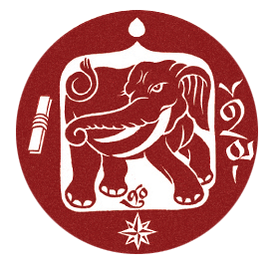Okunoin
May 13, 2019Moss blankets the ground and drips from ancient gravestones in luminous chartreuse. Towering 700-year old Japanese pines stand sentinel against the morning chill in a crowded canopy. Dawn pierces their branches in golden shards, its’ light harshly illuminating statues of Buddha, innumerable gorintō and other odes to the dead. Where sunlight cannot reach, cavernous shadows are rendered deep and dark. My breath rises through falling snowflakes as I anxiously labor up the lantern-flanked pathway toward the mausoleum. I feel the presence of others and often turn to look behind me. There is no one.
Okunoin is the largest cemetery in Japan, said to inter over 200,000 souls since the 7th Century. Located in the Kii mountains of Wakayama Prefecture, UNESCO-designated Okunoin is the centerpiece of Mount Koya (Koyasan). The village was founded as a Buddhist retreat by monk Kobo Daishi (Kūkai) upon his return from studies in China. Chosen due to its’ unique geography atop a high plain surrounded by eight other peaks, the location is said to resemble a lotus flower. Upon his death, Kobo Daishi was interred at Okunoin. Hoping for nirvana, adherents have chosen to be buried amongst the pines and close to the revered monk in the now-sprawling cemetery. According to lore, Kobo Daishi is actually not dead but has merely entered samadhi (eternal meditation) awaiting the Buddha of the Future, Miroku Nyorai (Maihreya). Upon their meeting, all souls resting in Okunoin shall too rise.
Entrance to the vast cemetery is made over Ichinohashi Bridge that begins the two-kilometer long footpath toward Kobo Daishi’s mausoleum. Visitors bow in reverence as they cross the threshold and enter into the transcendent realm. For many, this is the culmination of arduous pilgrimage routes up the mountain, once the only way to get to Koyasan. Along the footpath and under broad pines, pilgrims clutch rosary beads and staves as they make the final approach toward Kūkai. Passing through shards of sunlight, their white garb and woven rice-straw hats glimmer in the contrast. The faded red hues of aprons and knitted hats similarly burn brightly and sporadically in the dappled death-scape. They adorn stone Mizuko Jizo statues and indicate the graves of deceased infants gone too soon. Veering off the main footpath, the ground is thick with moist detritus. Although the cemetery is maintained, fallen branches, flakes of bark, pine cones and needles decay underfoot. Alongside the souls resting here, back to the Earth shall it return.
All paths eventually intersect just before Kobo Daishi’s mausoleum at Gokusho Offering Hall where a row of metallic statues stand. Visitors ritually cleanse and pour water on these Bodhisattvas, an offering to departed family members, before venturing across Gobyobashi Bridge and into Kūkai’s compound. Each morning at 6am, three saffron-robed monks emerge from the hall with a wooden chest and carry a food offering to Kobo Daishi’s resting place. Following the rite, monks gather inside the main hall of Okunoin Temple for prayers. The temple is dimly lit by lanterns and intricately adorned. Sutra chants rise on sweet incense as the kneeling monks sit rigid. On a solitary dais in the inner sanctum, a head-monk presides over the ceremony. He is bald like his counterparts but wears dark robes. His voice resonates deeply under the low ceiling. In addition to the monks, there are a few visitors up with the dawn. They bear witness to the atmospheric contemplation of this moment.
On another cold morning I’m again up before sunrise and awaiting the monks and food processional. The morning is still and serene until an abrupt and piercing scream breaks the silence. Immediately, I grab my bag and head toward the commotion. In a stream, a monk squats, his hands held to his forehead in prayer. Covered only in a loincloth, he is immersed up to his neck and naked against the sub-zero temperatures. Vapor from his breath rises on the slight breeze as he incants sutras ever more silently, his body now submitting to the chill. He is not shuddering but seems calm and focused, his mind now submitting to the dharma.
In crumbling stone, ancient Okunoin marks the end of this life’s journey. The dharma, however, instructs us that we shall be again reborn and that the cycle will begin anew. Along our footpath and through life’s forests, our karma shall lead us to enlightenment and nirvana.
See images
